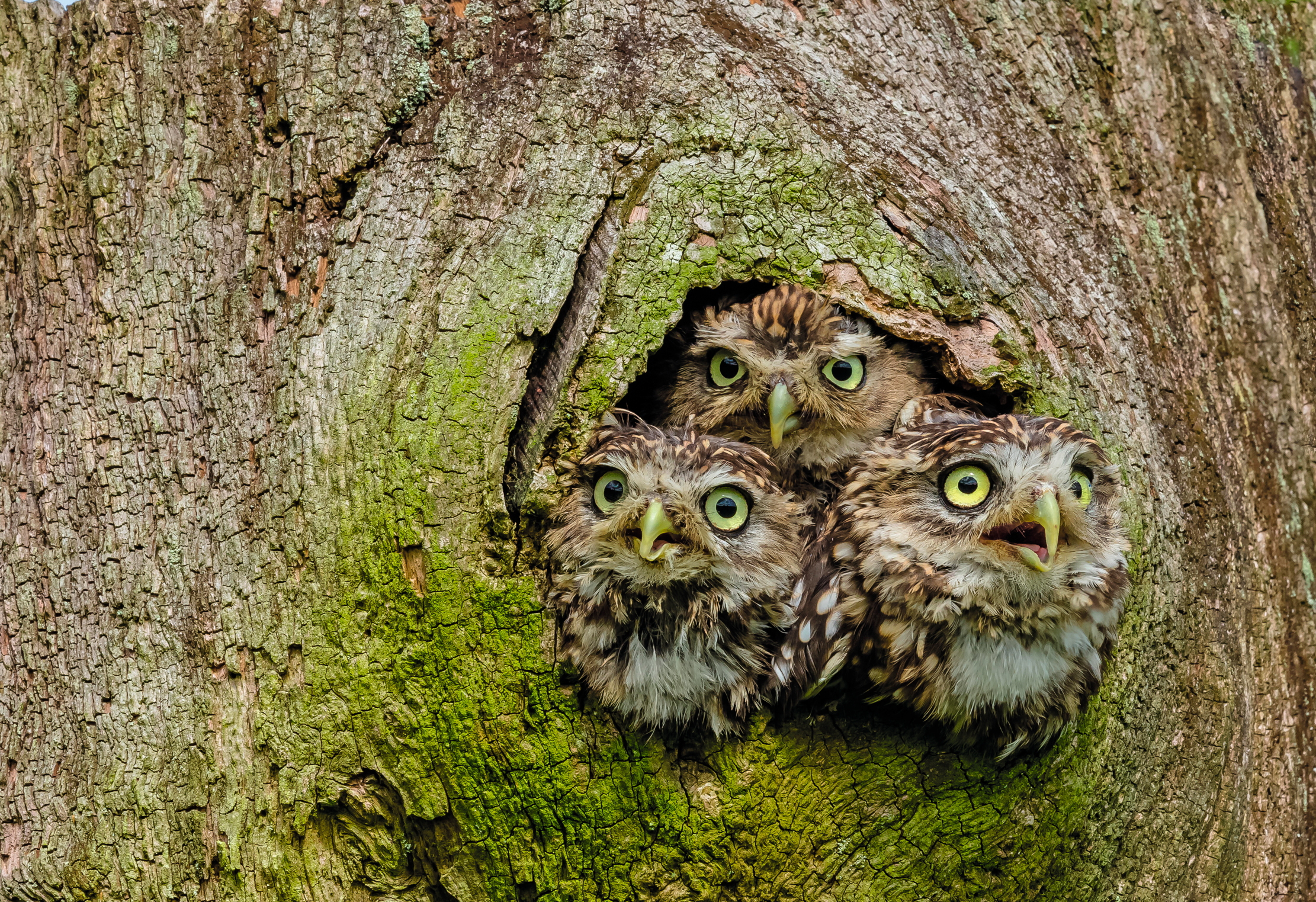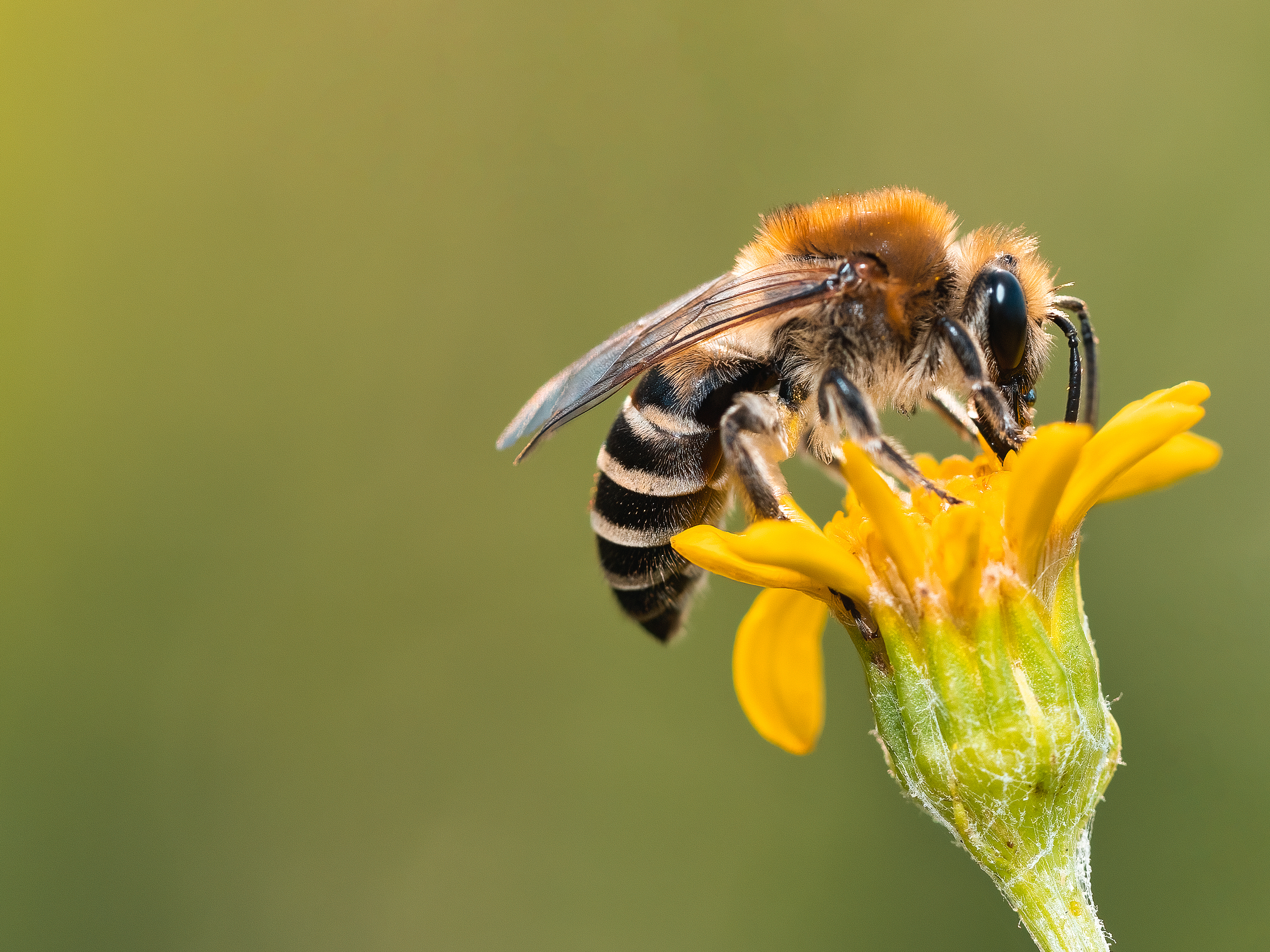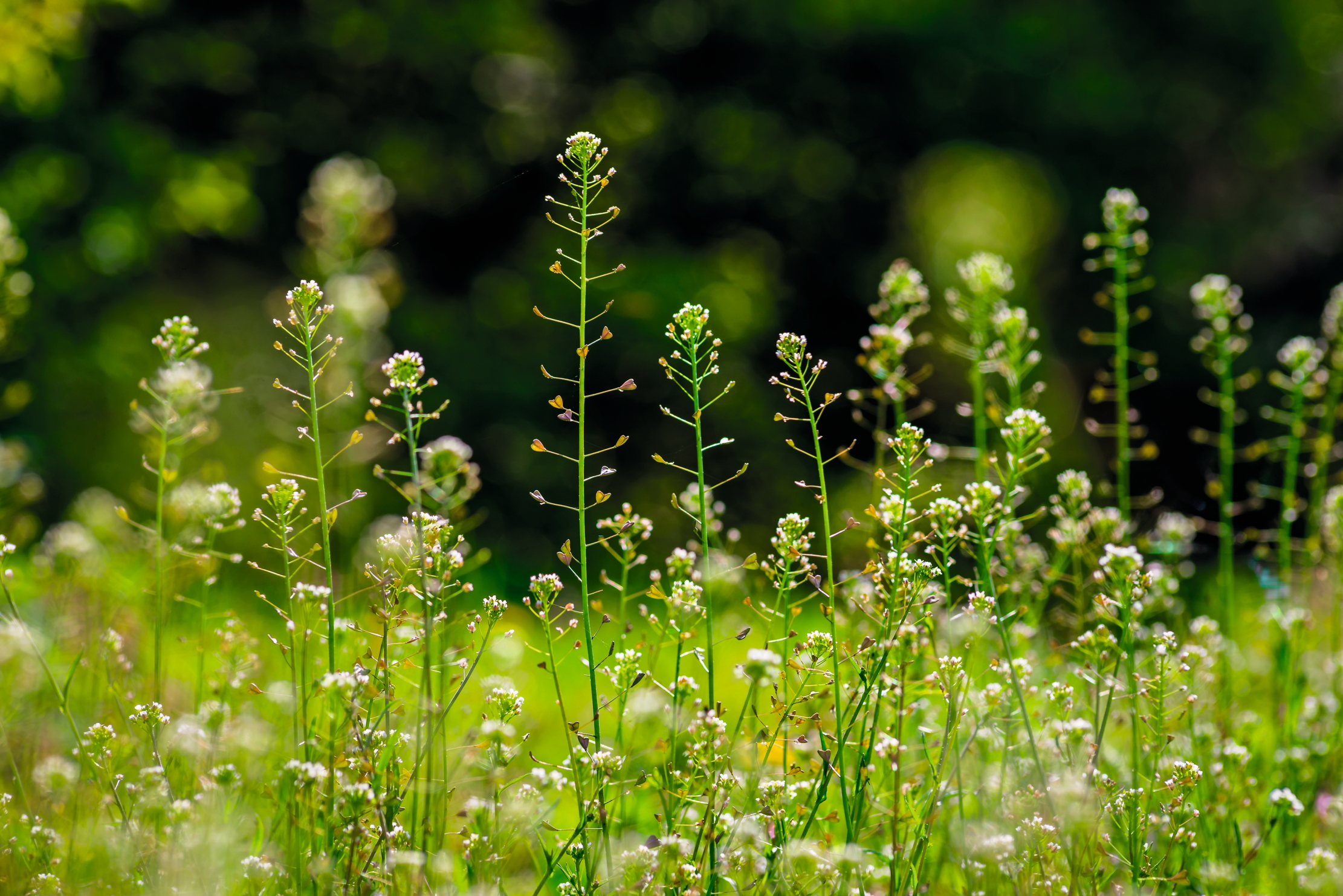Far better than its bite — what's really going on in the secret world of tree bark
A vital source of food, a pharmacy and a haven for wildlife, a tree's living skin is a surprisingly sophisticated surface.


I got lost in the middle of a wood once. It was night, I was on the tail of a runaway terrier and the torch gave out. It was winter, rain-clouded, moon-less — as close to laboratory black-out as anyone could hope to avoid in real life.
How to get back to the house, in such blindness? I looked back at that December midnight and wondered if, by some strange energy, some subconscious tampering with fate and time, I caused the bulb to blow. Previously, I had spent hours in the wood, where we kept pigs and sheep, learning to identify trees by touch. The braille of bark. That night I had my test.

After some initial stumbling, I found, in sequence: The Old Oaks (deeply, vertically fissured bark, fingernail deep, in mosaic ‘tiles’); The Beech Sorority (smooth, eel-skin, seal-skin, but as cold as stone); The Birch (sloughing off its skin, like unwanted paper bandages); and The Gean, or Wild Cherry (bark with hoops of pores, or ‘lenticels’, that I used as my abacus when sheep-counting). Then it was a left turn, straight up the steep path and out of the wood.
If my fingers had met polystyrene bark (elder), gunstock bark (hazel, polished by the passing bodies of pigs), punch-spongy bark (Californian redwood: an early owner of the wood had a grandiose dream, for pluvial far-west Herefordshire, of arboretum creation) orientation would also have been enabled by feeling trees.
A navigatory aid for the sightless. Almost limitless are the human uses of tree skin; when Ötzi, the Copper Age man, was dis-interred in 1991 from his mummifying burial in Alpine ice, he had with him two small birch-bark boxes, one of which carried embers for, paradoxically, starting a fire made from wood. Over the millennia, bark has been the all provider for humans, from bread to books. If beech is the popular graffiti tree, lovers having carved their initials on it forever (the Romans even had a proverb for amatory, arboreal tattooing: crescunt illae; crescent amores, ‘As these letters grow, so may our love’), its bark may well have been the material of our first rune-scribed books. In Nordic languages, ‘book’ and ‘beech’ can be synonymous: buch.

However, on that mole-fumbly winter night of the lost dog, I was not unaware of the simple tactile pleasure of the various barks. Neither did I forget their lovely aesthetic in daytime: how silver birch seems permanently wrapped in Ice Age moonlight, the way that a wet winter oak on the horizon is ink-stained or the ornateness of the lattice-work of sweet chestnut. There is yet more art to bark: under the surface. The legless larvae of bark beetles tunnel away, creating abstract patterns. Each of the 67 British species fashion distinctive galleries. The esoteric etchings of bark beetles are beautiful, but sometimes deadly; the wood-carving grubs can transport fungal spores. Between the 1970s and 1980s, almost all English elms above the size of a shrub were eliminated by Dutch elm disease, caused by the fungus of the genus Ophiostoma and carried by various bark beetles. It was one of the most dramatic extinctions of modern times, utterly altering the national landscape. In such instances, the grooved carvings of the beetles are the tree’s epitaph.
Bark only appears inert. It is the tree’s living skin and, like the human epidermis, exists in layers. The coarse outer skin is a shield and, under this, the ‘plumbing’ of phloem tissue passes sugary food from the leaves to the rest of the tree. Phloem has but a brief life: after serving as pipework, it dies, turns into protective outer bark or rhytidome, notably full of tough cork cells.
Exquisite houses, the beauty of Nature, and how to get the most from your life, straight to your inbox.
A surprisingly sophisticated substance, bark. Tree species wear a coat to withstand the tribulations of their particular environment. The white bark of silver birch reflects the destructive UV rays of sunlight, a necessary aid for a pioneering tree, oftentimes lacking the shade of companions. The thick-plaited bark of Scots pine is a firewall against the periodic, historic conflagrations of pinewoods. Protection can be proactive, too — bark has chemical tricks up its sleeve to ward off pests and pathogens. When under attack from leaf-devouring insects, the oak tree releases tannin in the bark as deterrent vapour and Scots pine produces a toxic sticky resin.

Alas for trees, their tender young skin, rich in phloem sucrose, is deer-nip, sheep-nip, rabbit-nip, squirrel-nip. A tree stripped of its bark is a dead tree and a deer, sheep, rabbit or squirrel will de-skin a tree overnight. The fatal botanical consequence of skin-stripping a tree is an ancient understanding. According to the Roman author Tacitus, the old German law for someone who peeled, or allowed to be peeled, a living tree was to have his navel cut out and nailed to the tree and then be driven around the tree until all his guts were wound about its trunk.
An animal’s desire to nibble bark may be driven by more than hunger. I learned this from our miniature Shetland pony called Willow, who got knocked in the knee when playing with pals Zeb, George and donkey Snowdrop. To ease the pain of his bruised and swollen joint, Willow the pony hobbled to a willow bush, Salix alba, and gnawed its bark for a day. The skin of willow produces sap containing salicin, which is analgesic, anti-inflammatory and antipyretic. Salicin is the metabolite of aspirin. Such self-medication by animals is technically ‘zoopharmacognosy’ and is, doubtless, the origin of human medicine. We watched the animals. To this day, African ethnic groups prepare a concoction made from the shrub Vernonia amygdalina as treatment for parasitaemia and diarrhoea, echoing their primate neighbours.

For fauna and flora, bark can be a world entire. Food. Medicine. Home. That deep, dark night in the wood of the lost, when I finger-tapped the oaks I also touched the crumbly lichen and the velvet moss existing in their crevices. On one oak, there was a sprouting of fern, the prehistoric plant, and in my midnight search I was rendered as original as Ötzi. The fissures and crevices of bark are a haven for wildlife; the bark of mature oak shelters more than 700 species of lichen alone. Unwrapped, bark in these isles would comprise a habitat of millions of square acres, with an insect, a spider in every niche. On their invertebrate tail come, in turn, the hungry birds, the tits and the woodpecker. As does every habitat, bark has its specialist killers. The supreme hunter of bark in these isles is sly, serial, almost overlooked.
Watch it now, the little treecreeper, as it climbs the oak or the pear or the whatever tree. Only the treecreeper has a bill long enough yet fine enough to probe the abysses of mature bark and successfully remove insects, their larvae and their eggs. Upwards the tree-creeper goes with its tweezer-beak, inspecting methodically, an avian Crippen. Up the bird goes, in a spiral, a counter helter-skelter.
After the treecreeper, others will ascend on the hunt, gripping the tree’s skin with claws, even with scales, as snakes can climb. All of them using, in their own way, bark to live, like so many other species of the natural order.

Norman Foster on the Country Life podcast: 'The Green Belt is one of our greatest inventions'
Lord Norman Foster, one of Britain's great architects, joins the Country Life podcast.

Plant trees for pollinators in need with the Woodland Trust
We can’t live without the industrious insects that pollinate our crops and support our ecosystem. Many of their populations are

The weather lore of January that claims to predict the future
Predicting the weather using folklore is not as lackadaisical as it might seem, says Lia Leendertz, as she reveals what

The vegan farce that is 'bee-free' honey will spell disaster for bees, farmers and all of us
Our columnist Agromenes ridicules the notion the bee-free honey is a kindness to bees.
-
 'A masterpiece of timeless elegance' for sale on the charmed Surrey estate once owned by Henry VIII and the Guinness family
'A masterpiece of timeless elegance' for sale on the charmed Surrey estate once owned by Henry VIII and the Guinness familyThe Manor House in Burwood Park is a grand, enormous and undeniably impressive. Annabel Dixon takes a look.
-
 Remembering the Country Life Quiz of the Day by doing the Country Life Quiz of the Day, December 2, 2025
Remembering the Country Life Quiz of the Day by doing the Country Life Quiz of the Day, December 2, 2025Today's quiz is about the quiz. Every question has been asked before. Can you get 10/10?
-
 The neglected weed with 100 different names that 'deserves more than a passing thought'
The neglected weed with 100 different names that 'deserves more than a passing thought'Shepherd's purse is a common sight in our hedgerows, but there is much more to this plant than what meets the eye.
-
 The very nature of Middle Earth — how Tolkien's passion for the countryside inspired the Lord of the Rings
The very nature of Middle Earth — how Tolkien's passion for the countryside inspired the Lord of the RingsA Nature writer at heart, J. R. R. Tolkien drew on his love of the Malvern Hills and the surrounding countryside to paint his fantasy realm, says James Clarke
-
 A walk around St Albans and its cathedral — a 'welcoming place, and proud of it'
A walk around St Albans and its cathedral — a 'welcoming place, and proud of it'Fiona Reynolds explores the ancient city of St Albans to discover how its cathedral connects with the people and geography of the surrounding area.
-
 From the Box to the Yox — how did our rivers get their names?
From the Box to the Yox — how did our rivers get their names?British river names trip off the tongue like nonsense of Edward Lear, but the meanings behind these great watercourses run deep.
